Aaron Wright ::
Industrial Designer, Experience Researcher,
Architectural Designer
Industrial Designer, Experience Researcher,
Architectural Designer
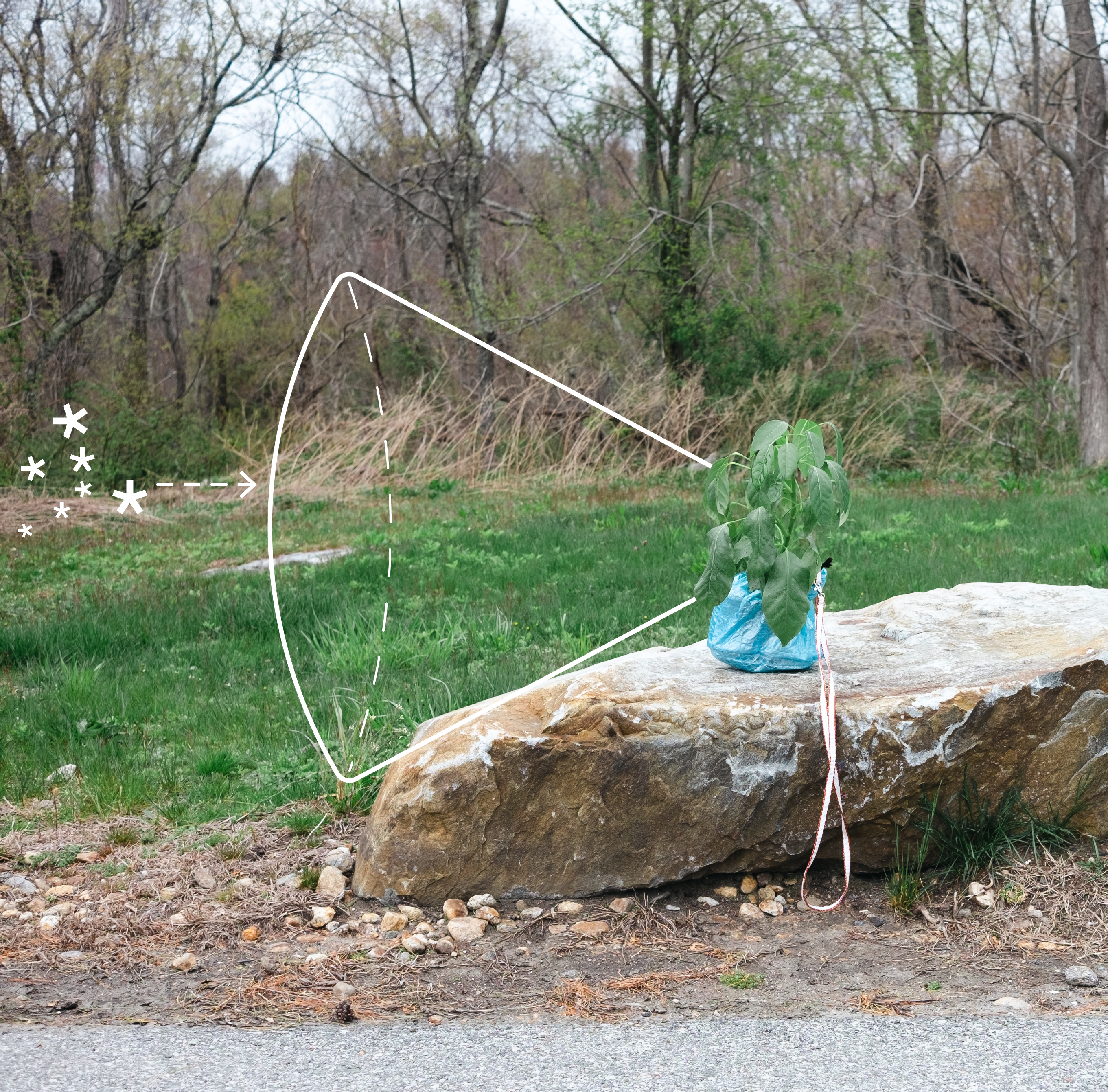
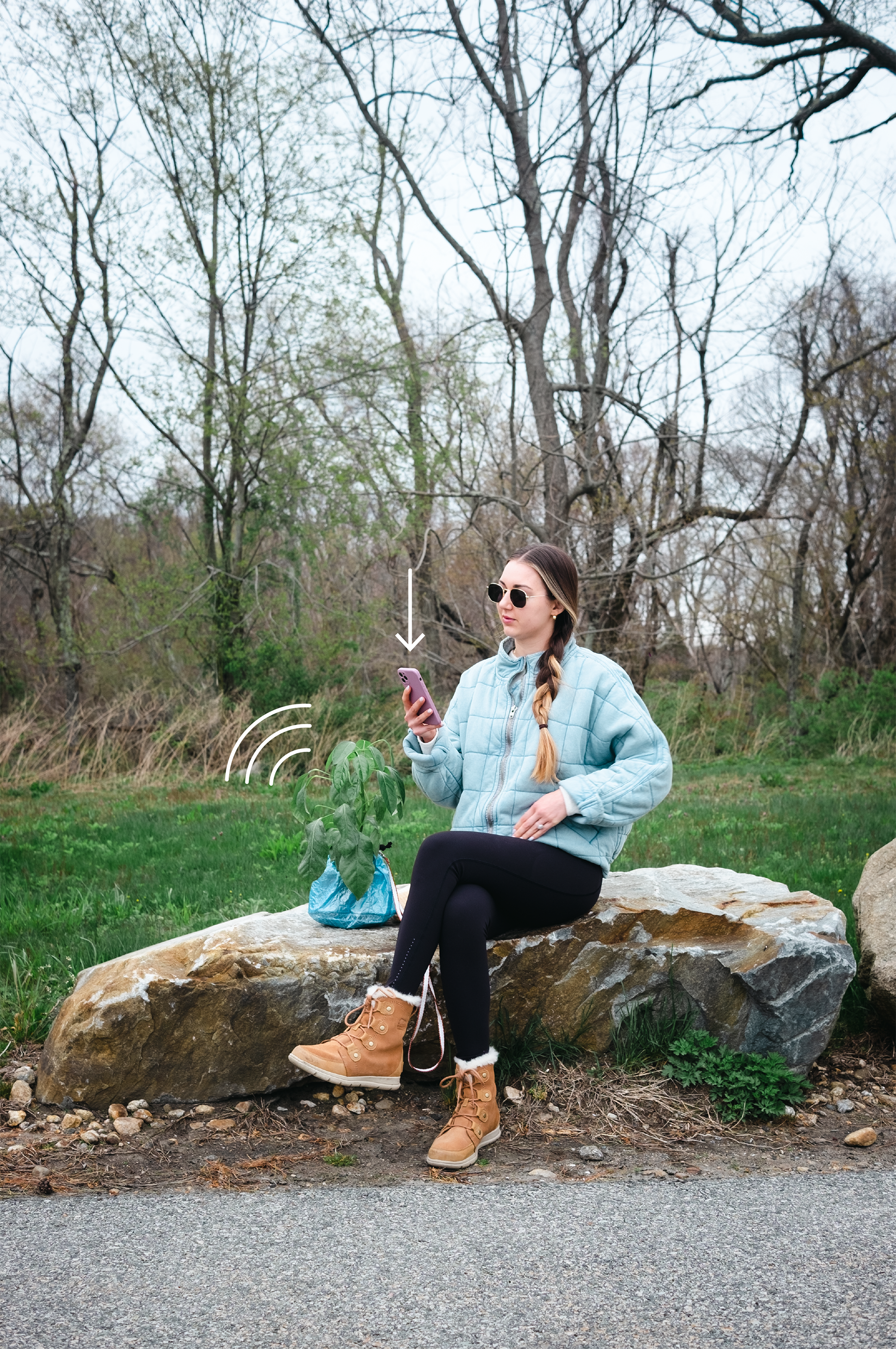

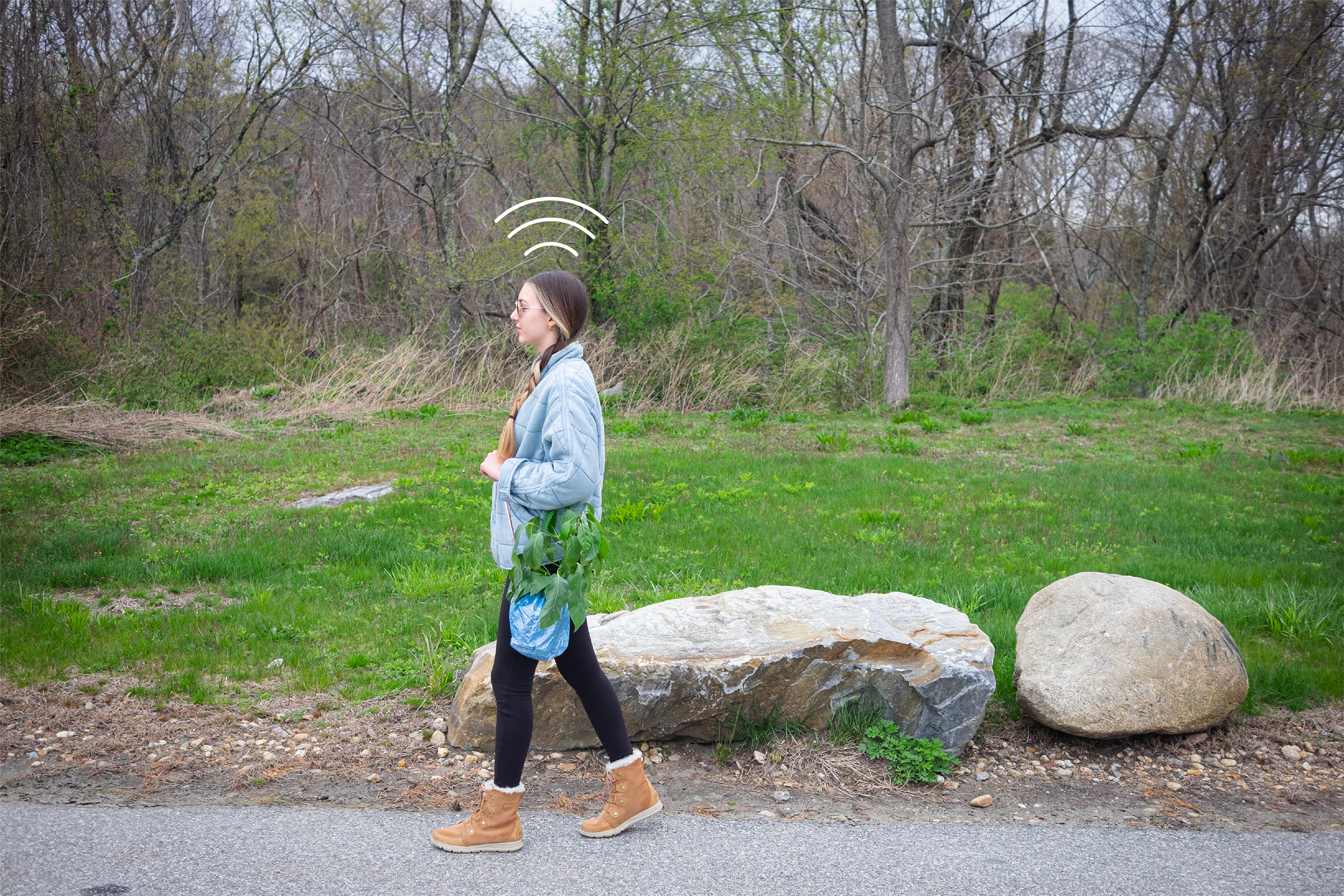

@roamingplantbot
I'm just a plant, roaming around, sequestering carbon, and telling you about it. Out here trying to make the invisible visible in 2022. c.2022
Tags: Environmental Sensing, IoT, Data Personalization, Wearables, User Experience Research
Toolkits: GPS/Glonass, Arduino IDE, Physical Computing, cartography, sewing, UI/UX Research, pattern making, Raspberry Pi, Python, Node.js, p5.js, Twitter
Human is Nature, Nature is Human
Persistence; Dullness, and the stark contrast of the built environment paired with plants, weeds, things that ‘don’t belong’ in man-defined nature. Everything is petro – chemically colored. Varying blues and greys. There is a human walking beneath the tree, to give scale, but also context. These things don’t exist without human interaction and abiotic factors aren’t producing abiotic experiences. They’re both lively. A point in an environment’s life – cycle is layered: distorted, wrong. It shows an alteration of reality. It also shows there are multiple perspective of the tree. One as nuisance, one as shade, one as persistence / perseverance, and the other as adaptability. Depending on the environments grandeur, the viewer is ‘farther and farther removed from the scene – its context. They are viewing perceived reality though a scene.

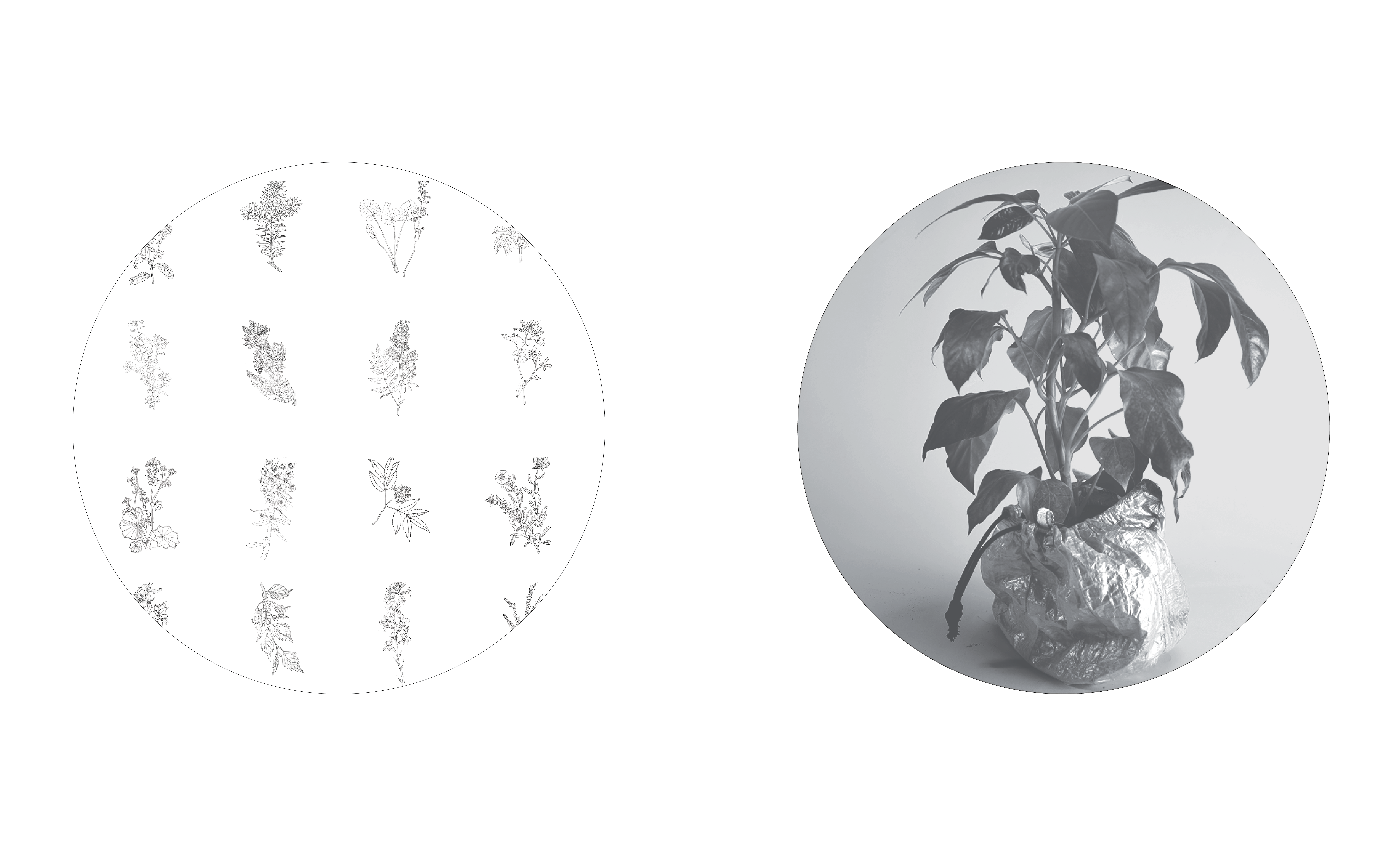
THE PLANTBOT
@roamingplantbot uses Geranium maculatum (Cranesbill Geranium)as a carbon sequestering plantPlants that act as PM2.5/NO2 Sinks:
Achillea millefolium (Yarrow), Alchemilla mollis (Lady’s Mantle), Aster spp. (Aster), Convolvulus cneorum (Silverbush), Erysimum (Wallflower), Geranium maculatum (Cranesbill Geranium), Hebe spp. (Shrubby Veronica), Heuchera (Coral Bells), Hydrangea arborescens (Hydrangea), Lavandula spp. (Lavender), Osmanthus delavayi (Delavay Osmanthus), Pinus mugo (Creeping Pine), Salvia spp. (Sage), Stachys byzantine (Lamb’s Ear), Verbena bonariensis (Verbena
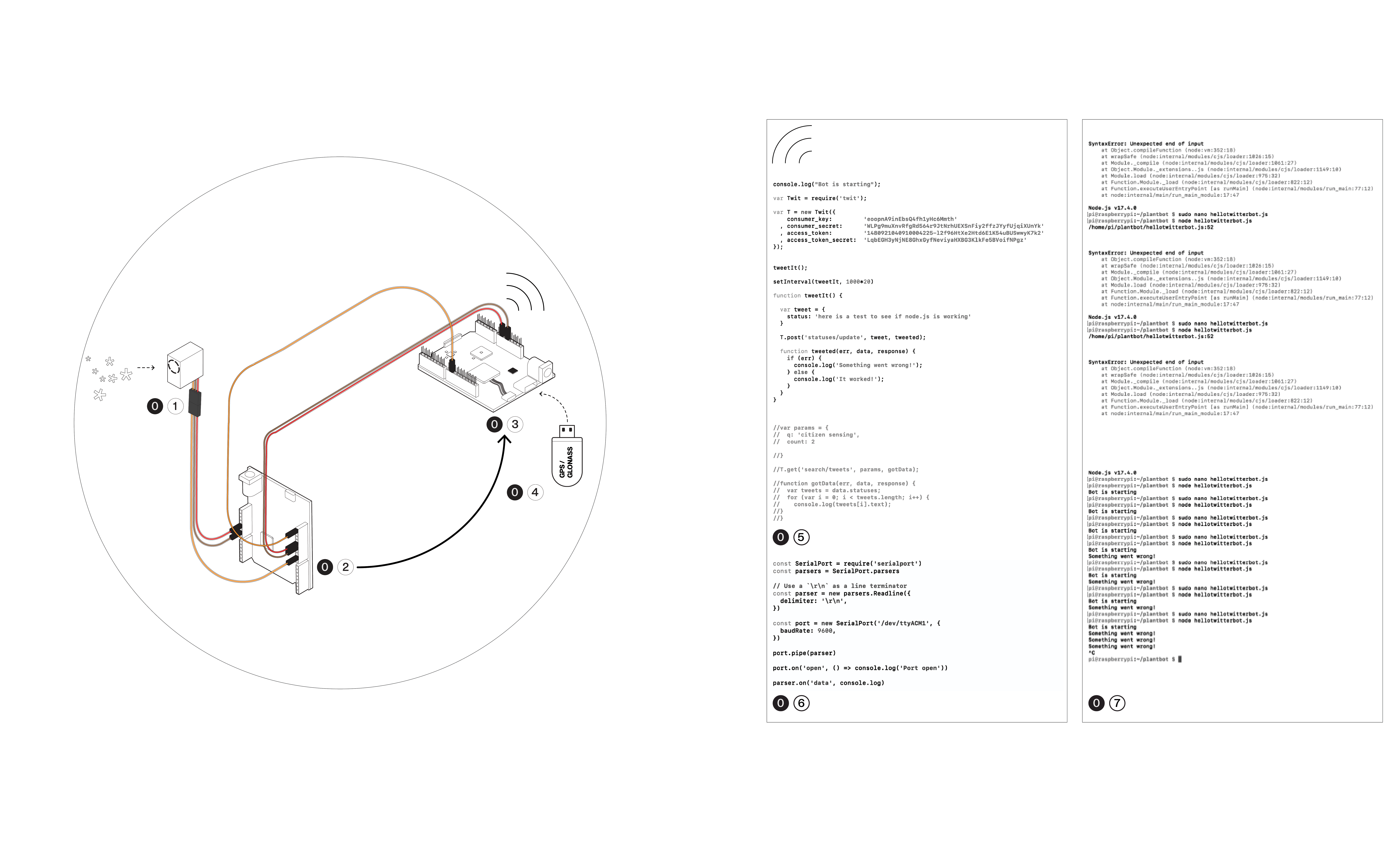
The Plantbot is an effort to understand the nebulous state of pollutants in our air, in real-time. There is a physical component to the bot being a carbon sequestering plant, the Geranium maculatum, that continuously scrubs the air. The bot has been made a dynamic sensor by being designed as a portable item that can be carried by the user in a recycled Dyneema carrying bag, where the plant and physical computing scheme are held. The goal is to have the user walk around, go about their day, while to Plantbot is streaming air quality data, looking for spikes, or irregularities from a given normal. When a spike is recognized, it sends a notification via Twitter, telling the user to stop and allow the plant to scrub the air in a given area. There is an amount of trust that has to be extended to the Plantbot by the user, but in any case, this in primarily an exercise in gaining trust in one’s immediate environment.

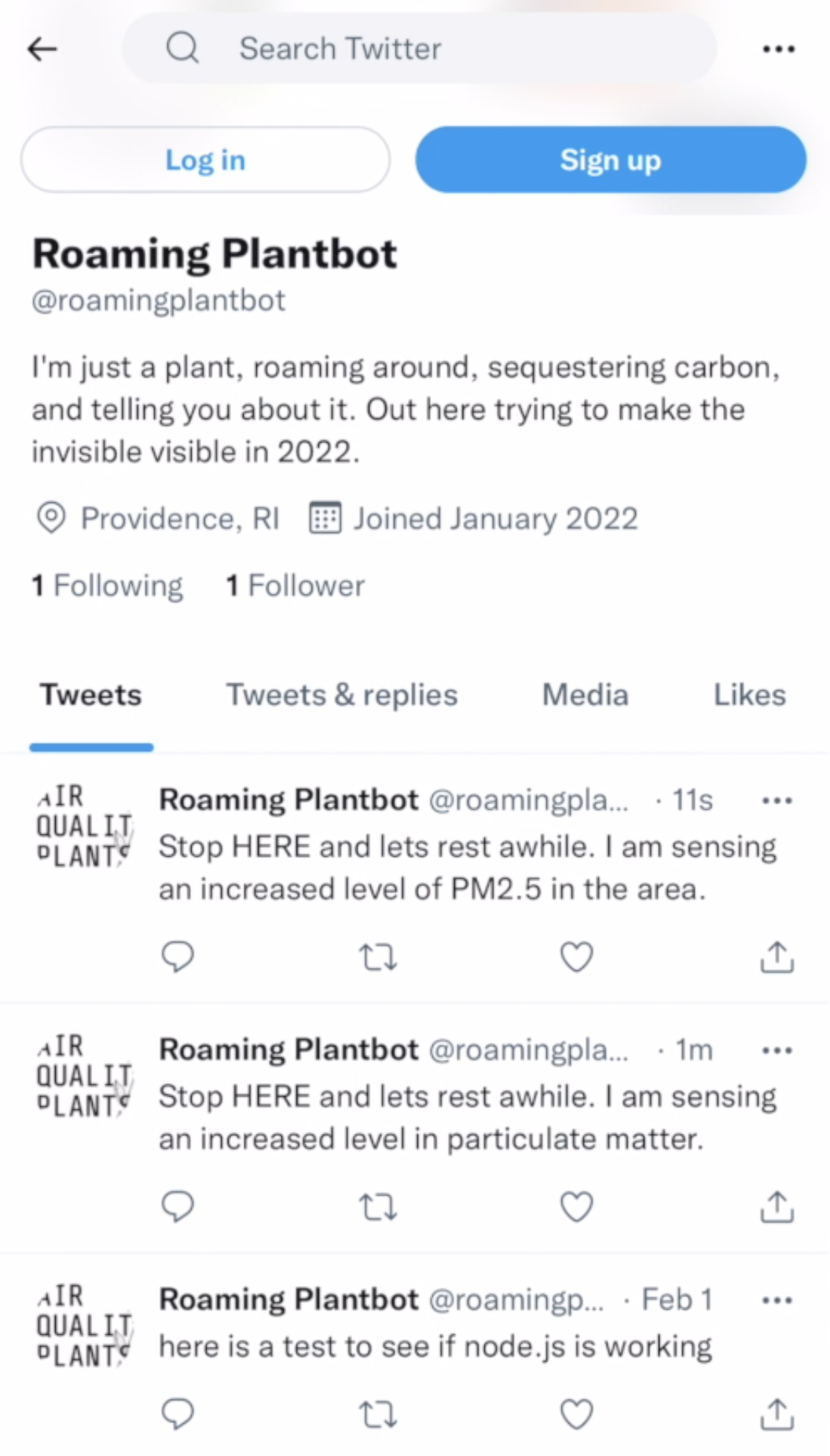
@roamingplantbot
A systems diagram showing the physical computing scheme. Communication between a particulate – matter sensor (01), connected to an Arduino Leonardo (02), that is serially communicating with a Raspberry Pi Computer (03), that was coupling GPS information, denoting the location of the particulate matter spikes, via USB (04).
The Plantbot is using the designed system to the left to communicate wirelessly with a Twitter account, @roamingplantbot. The system is logging spikes in particulate matter in the air, tracking those spikes via GPS (05), where the GPS application is constantly looking for predefined numbers associated with those of the particulate matter sensor. After those initial numbers go through the ‘filter’ of the GPS application, they are submitting to the Twitter account via a serial communication application, Node.js (06), on a Raspberry Pi computer. Again, from Node.js, applying a translation to those initial numbers to know create a message stating why those numbers matter, and subsequently tweeting them out from the Twitter Development platform (07). This is it inform a potential user of the Plantbot, that there are potential problem areas with the air-quality, and the plant could stay and do some scrubbing.
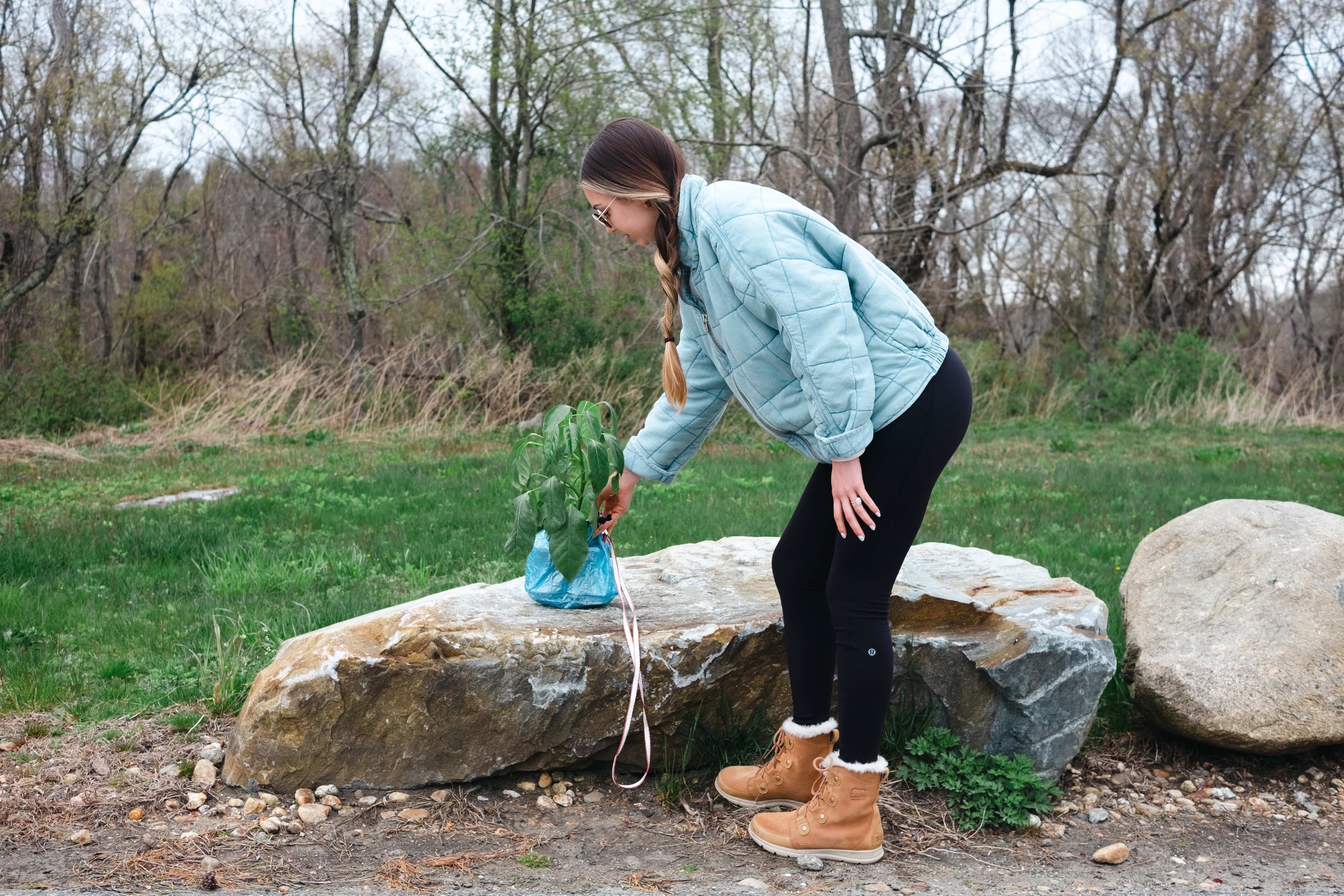
An Independent Study; Rhode Island School of Design; Advised by Fletcher Bach
